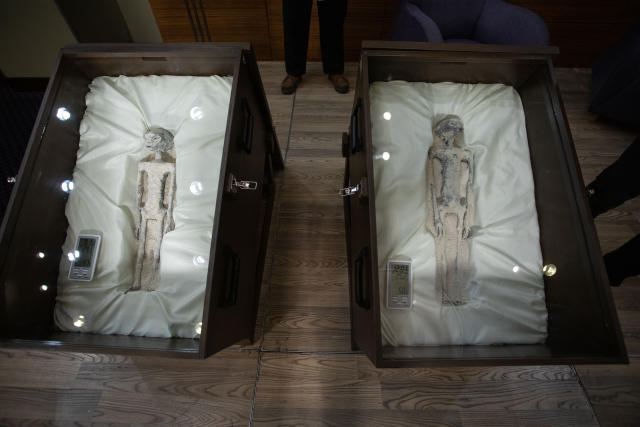NASA’s Objective: Elevating Science Over Speculation
In a world where UFOs and extraterrestrial phenomena consistently capture public fascination, NASA’s central mission revolves around steering discussions away from conjecture and conspiracy and towards the realm of rigorous scientific inquiry and logical reasoning. While the recent surge of interest in extraterrestrial topics may not have involved a mothership landing on the White House lawn, it has been prompted by NASA’s long-anticipated release of a report commissioned to investigate unidentified anomalous phenomena (UAP). These phenomena, encapsulated by the modern term “UAP,” extend beyond the confines of mere unidentified flying objects (UFOs), encompassing a wide range of unexplained occurrences occurring not only in our skies but also in the realms of space, the deep oceans, and everywhere in between.
The Enigmatic Tale of Mexican Alien Cadavers
Nonetheless, NASA’s disclosure of its inaugural UFO report shares the limelight with another captivating narrative involving potential non-human lifeforms. South of the border, Mexican lawmakers have convened to explore claims of alien existence on Earth, a storyline enriched by the display of two purported “extraterrestrial” remains. As reported by Reuters, these alleged alien cadavers bear an uncanny resemblance to the stereotypical depiction of aliens—characterized by elongated craniums, diminutive physiques, and three-fingered hands, a description echoing NPR’s account. The eerie exhibition was orchestrated by Jaime Maussan, a long-standing figure in the UFO community with a history of fabricating unearthly remains, and has managed to seize significant attention.
NASA’s Response: A Call for Scientific Scrutiny
Despite Maussan’s checkered track record in the realm of concocting alien mummies and corpses, this particular narrative has achieved considerable prominence. So much so that it became a topic of discussion during NASA’s briefing on the new UAP report held on September 14th. During this session, Sam Cabral, a BBC News Digital journalist, inquired whether NASA had engaged with Mexican authorities regarding the “sensational revelations” surrounding the alleged alien mummies. In response, David Spergel, the head of NASA’s UAP study team, underlined the importance of making any evidence of alien remains available for public scientific scrutiny. Drawing a parallel to NASA’s practice of making lunar rock samples, some of the most invaluable specimens from outer space, accessible to scientists across the globe, Spergel emphasized the significance of transparency in the quest for knowledge.
“We don’t know the nature of those samples that were shown,” Spergel remarked, “If I were the Mexican government, my recommendation would be: If you have something unusual, make samples available to the global scientific community; let’s uncover what’s truly there.” Joining the discussion, Dan Evans, assistant deputy associate administrator for research at NASA’s Science Mission Directorate, underscored the primary objective of NASA’s UAP study team: to dispel sensationalism and pseudoscience, precisely the kind that unfolded before Mexican lawmakers.
Evans stated, “Our fundamental mission today is to shift conjecture and conspiracy towards scientific inquiry and rationality. And we achieve that through data, as David pointed out, which is the core purpose of this study.”
The Shadowy History of Alien Claims
Notably, Jaime Maussan has a history of presenting counterfeit alien remains. Micah Hanks, Editor of The Debrief and a seasoned researcher in the realm of UAPs, highlighted that Maussan’s most recent foray into alien body claims is not an isolated incident. Back in 2015, Maussan organized an event in Mexico City that featured a blurry photograph portraying what appeared to be the remains of a diminutive mummified extraterrestrial. However, when clearer copies of the image circulated online shortly after its unveiling, it became evident that the image actually depicted historic remains of an indigenous American child, once displayed in a museum decades ago.
Hanks pointed out, “Some individuals involved at the time issued public apologies due to the misrepresentation of the child’s remains.” As for these recent “alien mummies,” their true nature remains shrouded in mystery. An analysis shared on social media suggests that they may have been constructed from various mammalian parts, including those from llamas.

